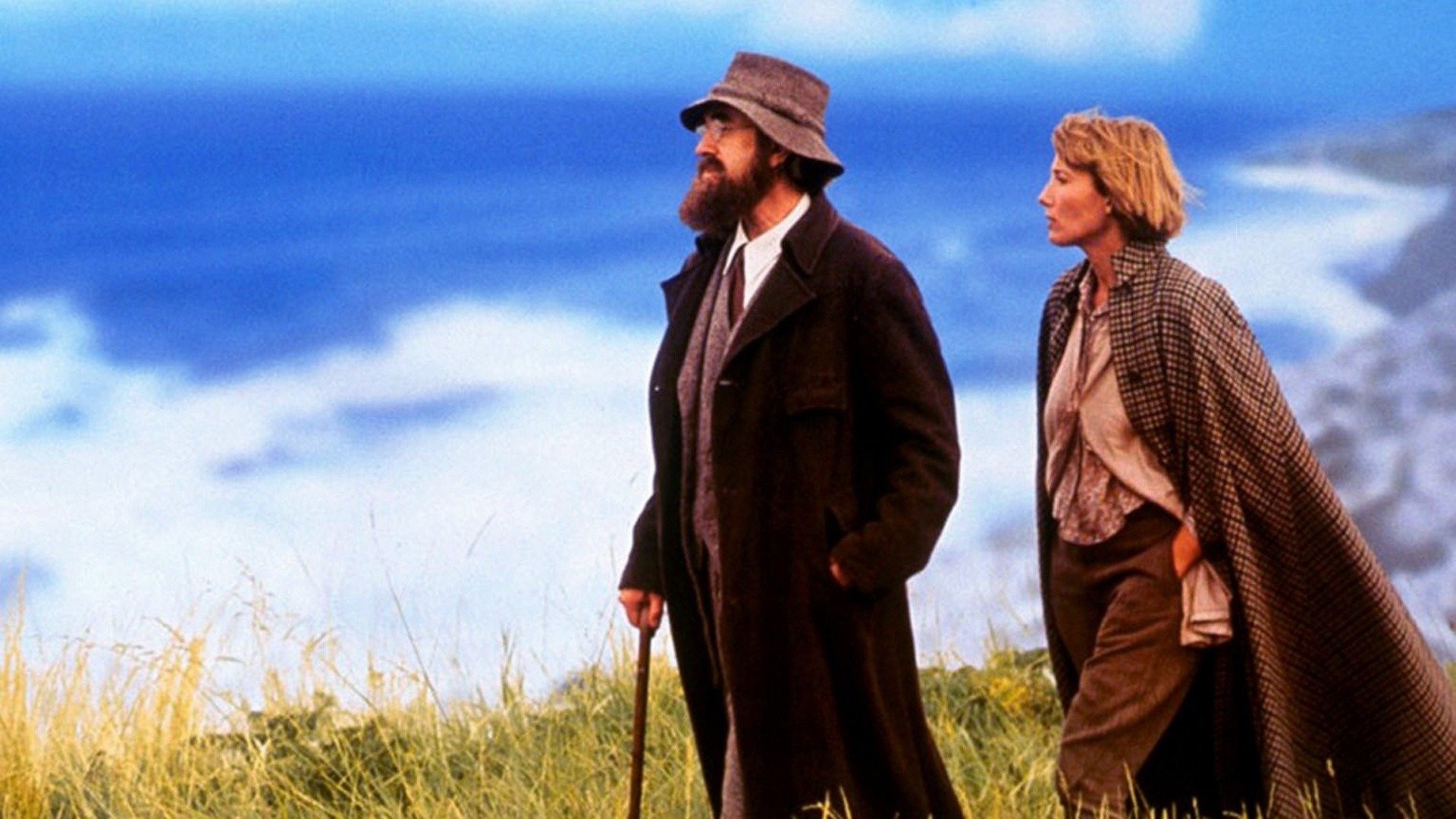"I've come to the conclusion there's no such thing as a beautiful Welsh boy. At any rate, all I've seen have been unparalleled frumps."
-- Lytton Strachey
Although the title of this film refers to the artist Dora Carrington, the content is drawn from Michael Holroyd's massive two-volume biography of Lytton Strachey, which I purchased in London nearly 50 years ago and which I am still reading, sporadically. I hope to finish it one day.
I saw the film when it was released and watched it again recently. I liked it well enough on my first viewing in 1995 but liked it even more on my recent viewing. The stars are Emma Thompson as Carrington, Jonathan Pryce as Lytton. The film is divided into chapters, the first one being "Lytton and Carrington: 1915.”

Strachey's homosexuality is expressed in the first scene of the film and remains a theme throughout, even though the film's other focus is on Carrington and her various lovers. Lytton arrives at a railway station in the English countryside. He chooses the carriage driven by the most beautiful young man; he arrives at the home of his hostess, and, whilst waiting for his cup of tea, looks out of the window and says to his hostess: "Who on earth is that ravishing boy?" The hostess calls to Carrington, who turns round, whereupon Lytton sees she's a woman, and says "Good God!" They meet, Carrington becomes infatuated with Lytton. Much of the film is devoted to their affection for each other and her unrequited passion for him. Their scenes together are beautifully handled and quite touching. They are sometimes on the verge of a sexual relationship.
There is a lot of aristocratic angst expressed in the film, perhaps due to the fact that no one really has to worry about money. With Lytton's death, Carrington becomes inconsolable. It's one of the reasons that leads to her suicide, which ends the film. The closing credits feature a slide show of many of her paintings.
But there is humour in Carrington. Lytton is a conscientious objector in World War I. He has to defend his views at a public hearing. At the hearing, one of his friends places an inflatable rubber tube on the chair that Strachey is to sit in. Strachey arrives, blows air into the tube, and announces to the very formal court: "I'm a martyr to the piles." When one of the judges asks Strachey "What would you do if you saw a German soldier raping your sister," Strachey replies, to laughter from the audience, "I believe I should attempt to come between them." As he awaits the verdict, one of his friends says: "They'll never send you to jail, too many of them went to school with you." Strachey makes clear in his testimony that he does not object to all wars, only to the current one.
Members of the Bloomsbury set wander in and out of the film: Lady Ottoline Morrell, Mark Gertler, Vanessa Bell. The film is beautiful to look at and evocative of Carrington’s paintings. One scene is a recreation of her painting of Lytton, which I’ve seen in the National Portrait Gallery many times. I used to send a postcard of the painting, in the days when people sent postcards. The performances are all excellent.

Lytton Strachey portrait by Carrington in the National Portrait Gallery, London

